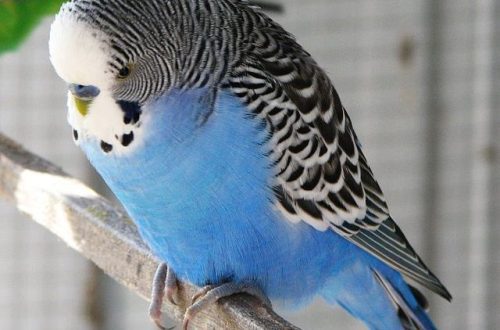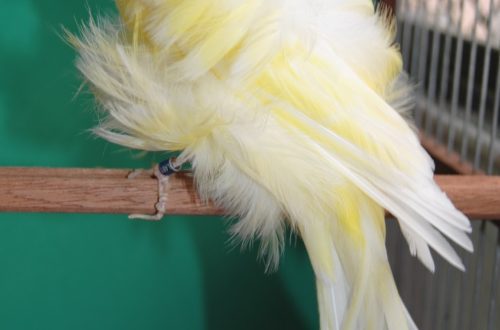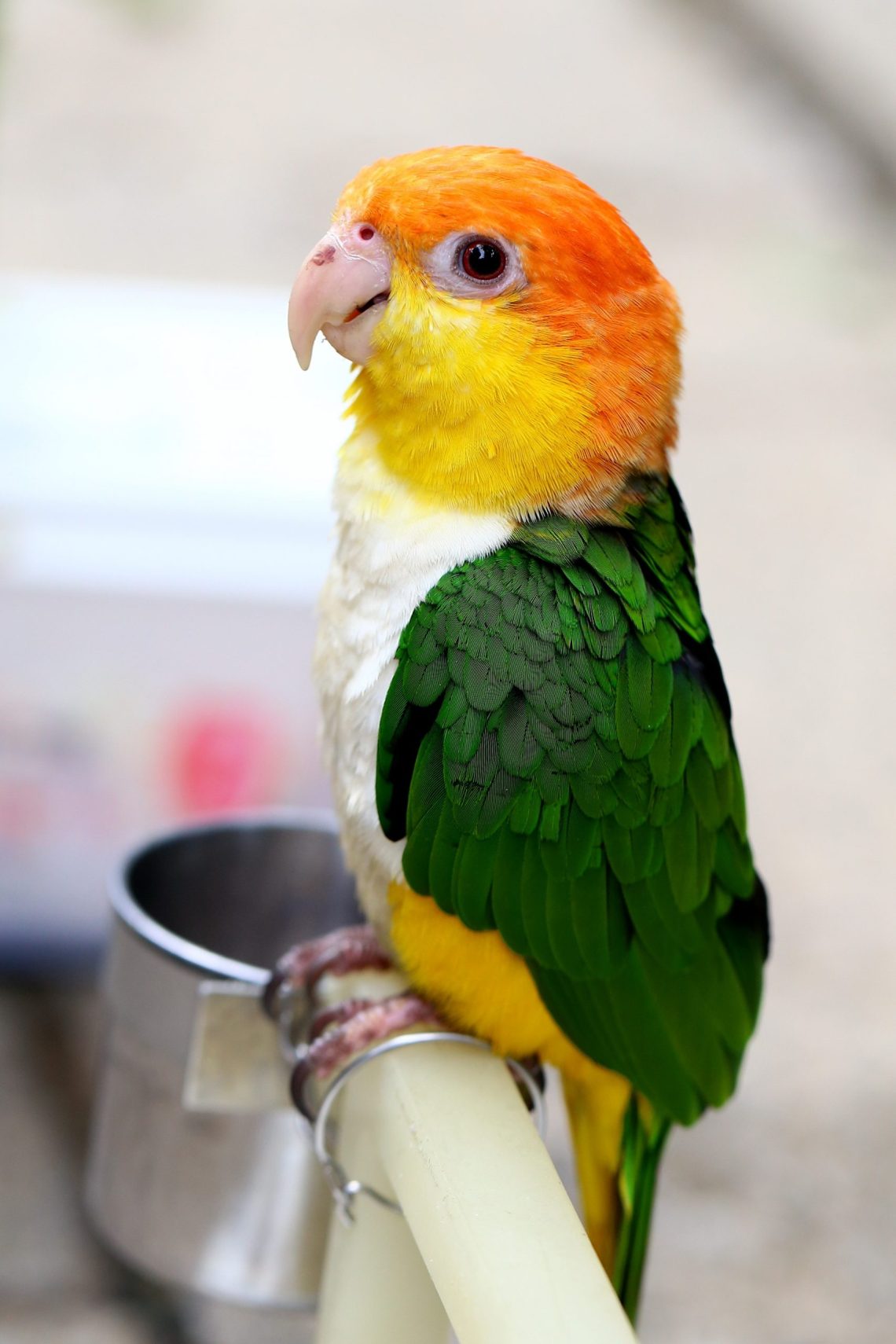
White-bellied parrots
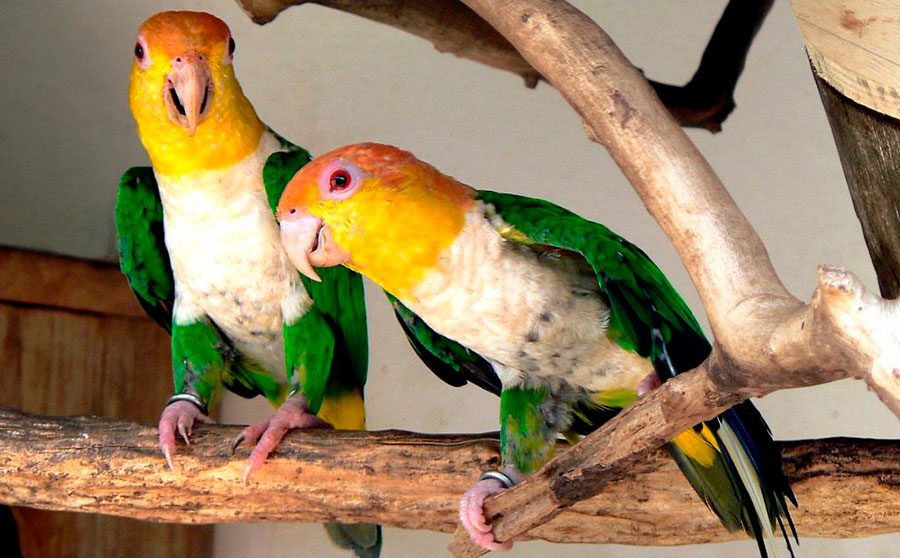 Despite their very bright appearance, these birds are not often kept at home. They are rarely found for sale. However, they have a rather unpleasant and loud voice. The disadvantages include their slightly obsessive nature and difficult learning. Birds have a fairly developed intellect, they are able to open locks. They get used to a person quite well, but their ability to imitate speech is weak, but they repeat sounds with pleasure. If you are considering these birds as potential pets, watch videos about these parrots – they can funny jump on the spot, like wind-up toys or even dance, lie on their back, somersault, they are sociable. However, if you are not ready to pay enough attention to the bird, but the decision to purchase just such parrots is invariable, get a pair. Usually, the cost of red-headed white-bellied parrots is higher than black-headed ones, due to their rarity. Another unpleasant surprise for future owners may be that these birds have a tendency to bite, the bird will need to be weaned from this habit, diverting its attention to toys. Birds are very mobile, therefore, if you notice a motionless caique outside of the sleep period, you should think about its state of health. They can damage furniture, wallpaper and other things. Birds live a long time (more than 20 years), keep this responsibility in mind when making a decision.
Despite their very bright appearance, these birds are not often kept at home. They are rarely found for sale. However, they have a rather unpleasant and loud voice. The disadvantages include their slightly obsessive nature and difficult learning. Birds have a fairly developed intellect, they are able to open locks. They get used to a person quite well, but their ability to imitate speech is weak, but they repeat sounds with pleasure. If you are considering these birds as potential pets, watch videos about these parrots – they can funny jump on the spot, like wind-up toys or even dance, lie on their back, somersault, they are sociable. However, if you are not ready to pay enough attention to the bird, but the decision to purchase just such parrots is invariable, get a pair. Usually, the cost of red-headed white-bellied parrots is higher than black-headed ones, due to their rarity. Another unpleasant surprise for future owners may be that these birds have a tendency to bite, the bird will need to be weaned from this habit, diverting its attention to toys. Birds are very mobile, therefore, if you notice a motionless caique outside of the sleep period, you should think about its state of health. They can damage furniture, wallpaper and other things. Birds live a long time (more than 20 years), keep this responsibility in mind when making a decision.
It is better not to keep these parrots with other species, as they are quite pugnacious, males often bully and can even cripple each other. The formed couple is very reverent and tender towards each other.
Contents
Maintenance and care of white-bellied parrots
For a pair of birds, a cage with a minimum size of 61x61x92 cm is suitable, it is better if it is a durable aviary with large dimensions. The cage should be placed in a bright part of the room, not in a draft, and without heaters nearby. The room should have a comfortable, fairly warm air temperature. The cage must have toys, caps, where the bird will spend its free time. Perches with bark of the required size, feeders and drinkers should be installed in the cage. Do not forget about hygiene, as these birds are a little sloppy in eating. You can also offer the birds a bathing suit with water at room temperature.
Feeding white-bellied parrots
In the diet of these birds, the ratio of succulent and grain feed should be approximately equal. The grain mixture is suitable for medium parrots. The mixture must be clean, fresh, free of impurities and odors. You need to pour it into a separate feeder. The other must always contain fresh permitted fruits, vegetables, herbs. Offer sprouted cereals, semi-prepared cereals without additives to parrots. You can flavor porridge, for example, with fruit puree or berries. After eating, all uneaten remnants of succulent feed should be removed, as they tend to deteriorate quickly, especially in hot weather. Also, parrots will not refuse fresh tree branches with bark, fruit trees, willow, linden, birch are suitable for this. Do not forget about the sources of minerals – sepia, chalk and mineral mixture in a separate feeder should be constantly present.
 Reproduction of white-bellied parrots
Reproduction of white-bellied parrots
These birds breed rather infrequently in captivity, most often in captivity conditions, it is advisable to keep the birds in an outdoor aviary in summer, where the birds will have the opportunity to take “sunbaths”. The size of the nesting house is 25x25x40 cm, the letok is 7 cm. For breeding, a heterosexual couple is needed; to determine the sex, you can use a DNA test. Birds at least 3 years old can be allowed for breeding, they must be healthy, molted, moderately well-fed. Unfortunately, the literary sources often write about unsuccessful breeding, some breeders achieved results after 3 – 5 years of attempts. Before hanging the house, the birds must be prepared for breeding – gradually increase the daylight hours to 14 hours with the help of artificial lighting and add food rich in protein and vitamins (boiled eggs, sprouted grains, etc.) to the diet. After the appearance of the first egg, these specific foods must be removed from the diet until the first chick appears. The clutch usually contains 2-4 eggs, which are incubated by the female, the male sometimes replaces her. The chicks leave the nest at the age of 10 weeks, but the parents feed them for some time.



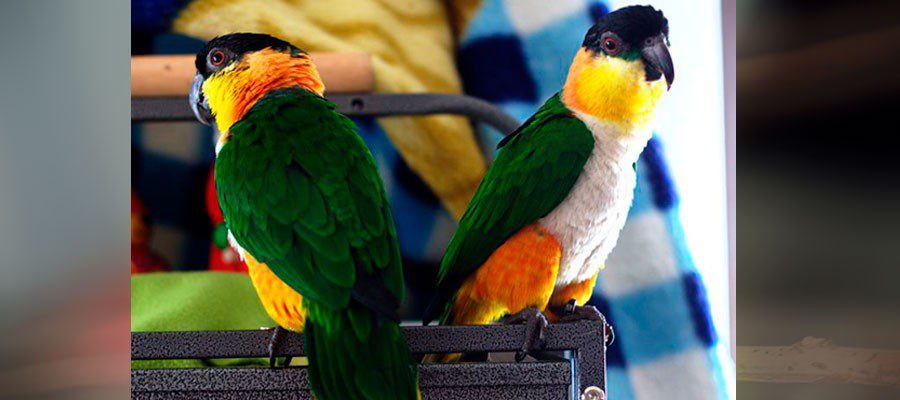
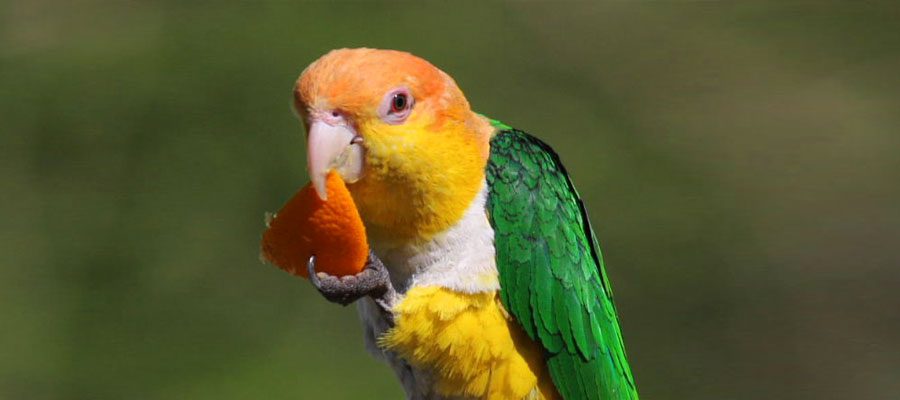 Reproduction of white-bellied parrots
Reproduction of white-bellied parrots
